2014-08-06
These guidelines have been written by WowLighting to provide buyers with the information they need to correctly select LED lamps to replace existing filament lamps, and to choose new LED light fittings. Many suppliers and manufacturers make misleading claims about their products, to avoid these myths we strongly recommend you familiarize yourself with the issues described below.
Continue reading →
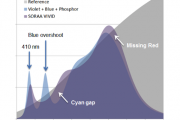 2014-08-05
2014-08-05
More than one year after Soraa demonstrated it (see my blog from 5/6/13), the importance of whiteness rendering is now being noticed by the larger lighting manufacturers. Perhaps the most notable imitation, from Philips (see LEDs Magazine July/Aug 2014, pp. 9-10), mixes in some violet-emitting with blue-emitting LEDs to provide a level of Optical Brightening Agent (OBA) excitation, which is necessary for whiteness rendering.
Continue reading →
2014-07-25
LED light strips are more widely used these days. Here are professional tips from Chinese LED manufacturer Shenzhen Vini Lighting to help you choose quality LED strips.
Continue reading →
2014-07-24
Streets are used every day in every neighborhood for vehicles and pedestrians alike. They make passage easier and more orderly for everyone. Since they are found outside they get very dark at night. Keeping them well lit then becomes a priority. Introducing solar street lamps makes the situation a little less dangerous.
Continue reading →
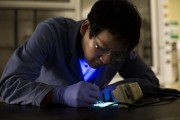 2014-07-18
2014-07-18
Researchers at the University of Michigan have taken a major stride toward perfectly efficient lighting that is also relatively inexpensive and simple to make. The same material can also reveal the presence of water by changing color.
Continue reading →
 2014-07-10
2014-07-10
Sandia National Laboratories has come up with an inexpensive way to synthesize titanium-dioxide nanoparticles and is seeking partners who can demonstrate the process at industrial scale for everything from solar cells to light-emitting diodes (LEDs).
Continue reading →
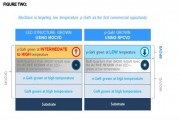 2014-07-10
2014-07-10
Australian Cleantech innovator, BluGlass Limited, has announced today that it has been successful in demonstrating the best ever p-GaN light output using its propriety technology, Remote Plasma Chemical Vapour Deposition (RPCVD) on an MOCVD partial LED structure. This result is greater than a 10 fold improvement in LED efficiency over the first p-GaN demonstration data published by the company in December 2012, when the same measuring methodology is applied.
Continue reading →
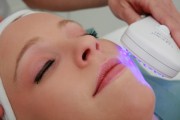 2014-07-02
2014-07-02
In 1967, a curious scientist in Hungary thought to perform an experiment to check if laser radiation can cause cancer in mice. He shaved dorsal hair and divided the mice in two set of groups and exposed one group of mice with a low powered ruby laser (694 nm). To his regret and to the joy of mice, they didn’t succumbed to cancer, but to his surprise, he observe that the mice treated with laser had grew back more hair as compared to the untreated group. This was the beginning of an era of photo bio-stimulation sparked by Endre Mester.
Continue reading →
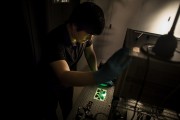 2014-06-24
2014-06-24
The most common kind of light bulb in the United States—the incandescent—is only about 5 percent efficient. The phosphorescent organic light-emitting diode, on the other hand, makes light out of 100 percent of the electricity that goes into it.
Continue reading →
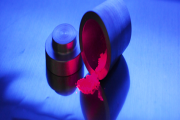 2014-06-24
2014-06-24
In cooperation with Dr. Peter Schmidt of Philips Technologie GmbH in Aachen, a team of researchers led by Prof. Dr. Wolfgang Schnick, who holds the Chair of Inorganic Solid-State Chemistry at LMU Munich, has developed a new material for application in light-emitting diodes (LEDs). “With its highly unusual properties, the new material has the potential to revolutionize the LED market,” says Schnick. The two teams report their results in the latest edition of Nature Materials.
Continue reading →
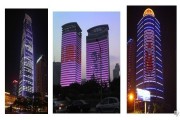 2014-06-13
2014-06-13
What is architectural media? When we consider the building as the information carrier, that’s it. With the development of LED photoelectric technology, the technology of architectural media has made great progress. During recent years, it has been widely used in the market, but not without problems. After hard and tedious attempts, we have come up with various solutions, especially in the application of glass wall screen. Thus a new super transparent LED screen appeares.With the qualities of super transparence and ultra light, it has obvious advantages in the field of arch...
Continue reading →
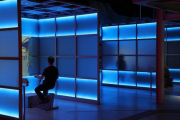 2014-05-27
2014-05-27
It was 1958, when J. Woodland Hasting and Beatrice M. Sweeney wrote the paper entitled "A persistent diurnal rhythm of luminescence in gonyaulax polydra". Paper concluded on how lights of different wavelength have the ability to change flow of a hormone named melatonin and hence affecting human body clock, also known as circadian rhythm (as shown in Fig 1).The most powerful wavelength to do so was found to be that of blue.
Continue reading →
2014-05-21
Researchers from University of Waterloo’s Chemistry Department announced they have found the “holy grail” for lighting that could revolutionize LED manufacturing, according to a Canadian media CBC report.
Continue reading →
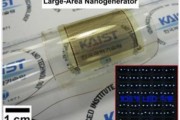 2014-05-16
2014-05-16
The energy efficiency of The Korea Advanced Institute of Science and Technology (KAIST) piezoelectric nanogenerator has increased by almost 40 times, one step closer toward the commercialization of flexible energy harvesters that can supply power infinitely to wearable, implantable electronic devices.
Continue reading →
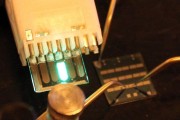 2014-05-14
2014-05-14
A device created by UCLA researchers could lead to a significant leap in the quality of images on smartphones, computer displays, TVs and inkjet printers.
Continue reading →
2014-05-02
The realization of OLED technology is contingent upon the development of appropriate materials, processing strategies and device structures which are scalable in terms of their cost, capacity, and capability. During the past decade significant progress has been achieved in the synthesis and characterization of OLED materials.
Continue reading →
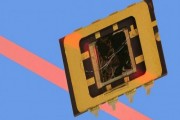 2014-04-29
2014-04-29
After using it to develop a computer chip, flash memory device and photographic sensor, Ecole Polytechnique Federale de Lausanne (EPFL) scientists have once again tapped into the electronic potential of molybdenite (MoS2) by creating diodes that can emit light or absorb it to produce electricity.
Continue reading →
 2014-04-28
2014-04-28
A lot has been discussed and studied on a bid to understand the most important question - Does light have any effects on human beings? Light can be categorized into two shades, one being natural: produced by sun while the other is artificial light originating from an electronic display or device.
Continue reading →
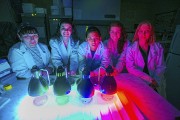 2014-04-22
2014-04-22
There was a time when no one thought about light bulbs—one blew, you screwed another one in. Nowadays, it’s more complicated, as energy efficiency concerns have given rise to a slew of options, including incandescent, compact fluorescent lights, and LEDs.
Continue reading →
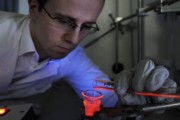 2014-04-15
2014-04-15
Researchers worldwide continue search for better luminescent materials for OLED manufacturing. Two new compounds with europium complexes developed at the Institute of Physical Chemistry of the Polish Academy of Sciences in Warsaw display in their class record high luminescence efficiencies in red, and their properties enable faster, low cost manufacturing of thin OLED films.
Continue reading →
2014-04-14
NTNU researchers Dheeraj Dasa and Helge Weman have, in cooperation with IBM, discovered that gallium arsenide can be tuned with a small strain to function efficiently as a single light-emitting diode or a photodetector. This is facilitated by the special hexagonal crystal structure, referred to as wurtzite, which the NTNU researchers have succeeded in growing in the MBE lab at NTNU. The results were published in Nature Communications this week.
Continue reading →
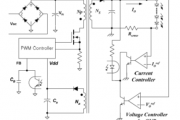 2014-04-08
2014-04-08
Roy Mi, Senior AE & Technical Marketing Manager at Fairchild Semiconductor introduces the company's LED driver with power factor correction in this latest blog entry. Please see below for more details:
Continue reading →
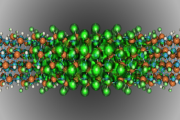 2014-04-07
2014-04-07
Nanostructures half the breadth of a DNA strand could improve the efficiency of light emitting diodes (LEDs), especially in the “green gap,” a portion of the spectrum where LED efficiency plunges, simulations at the U.S. Department of Energy’s National Energy Research Scientific Computing Center (NERSC) have shown.
Continue reading →
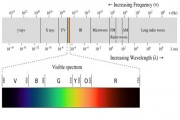 2014-04-01
2014-04-01
Gone may be the days, where the doctor used to pierce needle through the arteries of patient to collect blood sample and test for any perceived ailment. At this horizon of technology, scientists have been able to investigate, design, manufacture and calibrate new procedures to analyze a particular blood cell organelle without the need of collecting it explicitly. Not just in the field of cell biology, but smart medical devices are also making their presence felt in the field of tissue imaging, ophthalmology, neuroscience, orthopaedics, and ear cell regenerations as you will learn through this article.
Continue reading →
2014-04-01
There are a number of advantages within parking lot lighting than you might have initially thought. These can come in the form of design, professionalism, and security. Just as installing lighting will have advantages in the safety of pedestrians, it can also include advances in design, professional status and attraction of a business. Have a look at the following pro’s of parking lot lighting, and why it is something you should consider.
Continue reading →
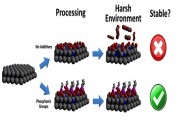 2014-03-26
2014-03-26
Researchers from North Carolina State University have developed a new processing technique that makes light emitting diodes (LEDs) brighter and more resilient by coating the semiconductor material gallium nitride (GaN) with a layer of phosphorus-derived acid.
Continue reading →
2014-03-19
A team of University of Toronto physicists led by Alex Hayat has proposed a novel and efficient way to leverage the strange quantum physics phenomenon known as entanglement. The approach would involve combining light-emitting diodes (LEDs) with a superconductor to generate entangled photons and could open up a rich spectrum of new physics as well as devices for quantum technologies, including quantum computers and quantum communication.
Continue reading →
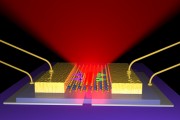 2014-03-13
2014-03-13
Most modern electronics, from flat-screen TVs and smartphones to wearable technologies and computer monitors, use tiny light-emitting diodes, or LEDs. These LEDs are based off of semiconductors that emit light with the movement of electrons. As devices get smaller and faster, there is more demand for such semiconductors that are tinier, stronger and more energy efficient.
Continue reading →
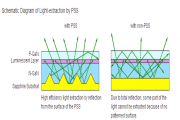 2014-03-10
2014-03-10
Oji Holdings Corporation has established the fabrication technology of patterned sapphire substrates (PSS) for LEDs which improves the performance of front luminance of LEDs by more than double compared to that of LEDs with non-structured sapphire substrate, by applying the technique of precise coating with fine particles.
Continue reading →
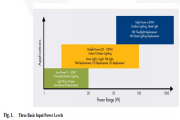 2014-03-07
2014-03-07
Fairchild Semiconductor recently released a white paper on low power LED market and applications. The paper is written by the company’s Lighting Specialist Brian Johnson and Marketing Specialist James Lee. Below is an excerpt from the paper:
Continue reading →
 2014-08-05
2014-08-05
 2014-07-18
2014-07-18
 2014-07-10
2014-07-10
 2014-07-10
2014-07-10
 2014-07-02
2014-07-02
 2014-06-24
2014-06-24
 2014-06-24
2014-06-24
 2014-06-13
2014-06-13
 2014-05-27
2014-05-27
 2014-05-16
2014-05-16
 2014-05-14
2014-05-14
 2014-04-29
2014-04-29
 2014-04-28
2014-04-28
 2014-04-22
2014-04-22
 2014-04-15
2014-04-15
 2014-04-08
2014-04-08
 2014-04-07
2014-04-07
 2014-04-01
2014-04-01
 2014-03-26
2014-03-26
 2014-03-13
2014-03-13
 2014-03-10
2014-03-10
 2014-03-07
2014-03-07